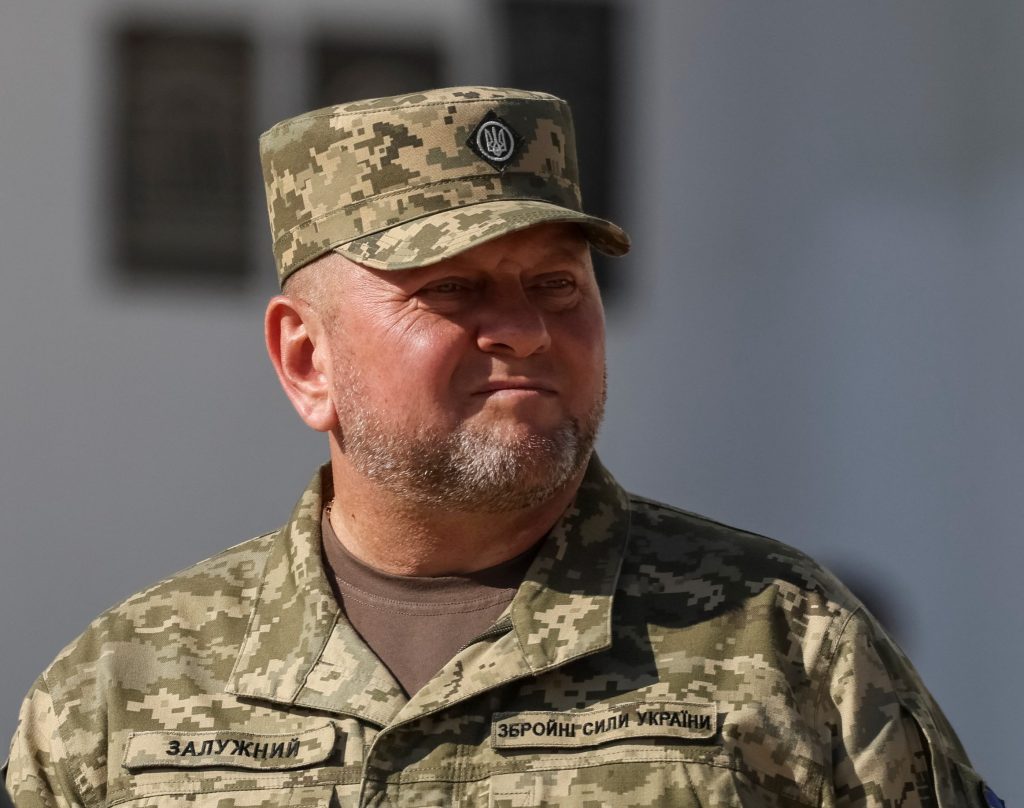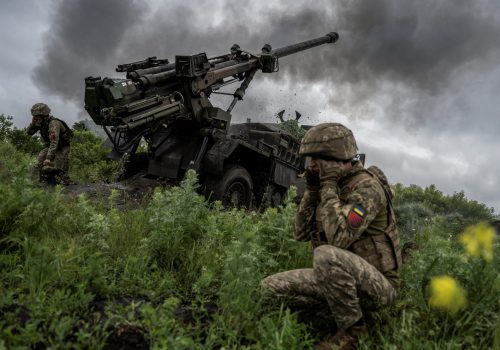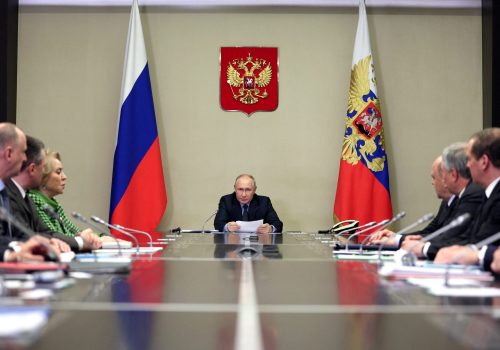Ukrainian commander-in-chief Valery Zaluzhny is not known for seeking the limelight, but his recent interview and essay in Britain’s The Economist magazine made headlines around the world. International attention has focused heavily on Zaluzhny’s assertion that the war with Russia has reached a stalemate, with some using the Ukrainian commander’s comments to bolster calls for a negotiated settlement with the Kremlin.
This has provoked a political backlash in Kyiv, with Ukrainian President Volodymyr Zelenskyy directly contradicting Zaluzhny and publicly rejecting claims of a stalemate. Speculation over a possible rift between Zelenskyy and his army chief has overshadowed the Ukrainian general’s detailed analysis of the war. This is regrettable as Zaluzhny’s comments are worthy of closer examination. In addition to acknowledging the current deadlock on the battlefield, Ukraine’s most senior officer has also provided the outline of a plan to defeat Putin’s Russia.
Stay updated
As the world watches the Russian invasion of Ukraine unfold, UkraineAlert delivers the best Atlantic Council expert insight and analysis on Ukraine twice a week directly to your inbox.
In his interview and essay, Zaluzhny seeks to explain how technological advances on both sides of the front lines currently favor defensive operations while making any major offensives extremely costly. The fighting during 2023 has provided ample evidence of this trend, with Ukraine enjoying defensive advantages in places like Avdiivka and Vuhledar, while Russia has held the upper hand in the south on the Zaporizhzhia and Kherson fronts. “There will most likely be no deep and beautiful breakthrough,” Zaluzhny comments.
The present dominance of defensive tactics on the battlefield works in Russia’s favor, as Ukraine cannot afford to let the conflict freeze along the current front lines. As Zaluzhny acknowledges, a static, positional form of warfare would greatly benefit Russia, allowing it to rebuild its military power before eventually threatening Ukraine’s armed forces and the state itself. Ukrainian commanders have far more limited resources at their disposal, and must aim to maintain momentum as they seek to liberate around 20 percent of the country and free millions of citizens from Russian occupation.
Zaluzhny sees technology as the key to regaining the battlefield initiative and ultimately defeating Russia’s invasion. In a war that has already witnessed the unprecedented use of everything from naval drones to cyber attacks, he argues that victory will go to the side best able to harness the potential of existing and new defense sector technologies. “The simple fact is that we see everything the enemy is doing and they see everything we are doing,” Zaluzhny writes. “In order for us to break this deadlock we need something new, like the gunpowder which the Chinese invented and which we are still using to kill each other.”
Zaluzhny’s blueprint for future victory over Russia has appeared at a relatively early stage in the conflict. A century ago during World War I, which is widely perceived as a similarly deadlocked conflict marked by the ascendancy of defensive tactics, new technologies did not begin to create openings for offensive operations until the third or fourth year of the war. It is also noteworthy that nothing comparable to Zaluzhny’s frank analysis has emerged from the Russian side, despite the reputation of Putin’s top commander, Valeriy Gerasimov, as something of an innovator.
Eurasia Center events

Despite his emphasis on the importance of new technologies, Zaluzhny’s vision for the future conduct of the war does not rely on any single “wonder weapon.” Instead, the Ukrainian general outlines the importance of effectively combining drones, electronic warfare, counter-battery fire, and new mine-breaching technologies.
Ukraine is now counting on the country’s partners to supply more of these advanced military technologies. While Zaluzhny is careful not to criticize Ukraine’s allies when commenting on the military aid supplied so far, he hints at a reluctance to send the most modern technologies and notes frequent delays in deliveries. “It is important to understand that this war cannot be won with the weapons of the past generation and outdated methods,” he says.
Zaluzhny argues that electronic warfare (EW) capabilities hold the key to victory in the drone war and acknowledges that for the moment, Russia has a clear advantage in this area. He advocates expanded production of anti-drone EW systems within Ukraine and abroad, and also calls for greater access to electronic intelligence from Ukraine’s allies, including data from assets that collect signals intelligence.
Zaluzhny recognizes that technology alone cannot defeat Russia. He notes the need to build up Ukraine’s reserves and close gaps in existing legislation that allow citizens to avoid military service. He also calls for a more modern approach to command and control within the Ukrainian military, “so we can visualise the battlefield more effectively than Russia and make decisions more quickly.”
Ukraine’s top commander cautions against underestimating Russia. He stresses that despite suffering heavy losses since February 2022, Putin’s army will continue to have superiority in weapons, equipment, missiles, and ammunition for a considerable time. Reading Zaluzhny’s detailed and sobering analysis, it is difficult to avoid the conclusion that time is not on Ukraine’s side.
Throughout his interview and essay, Zaluzhny repeatedly emphasizes the dangers of a long war, which he says would strongly favor Russia with its far greater human and material resources. “A positional war is a prolonged one that carries enormous risks to Ukraine’s armed forces and to its state,” he warns. The solution, Zaluzhny insists, lies in the effective use of the most advanced defense technologies. “New, innovative approaches can turn this war of position back into one of maneuver.”
Mykola Bielieskov is a research fellow at the National Institute for Strategic Studies and a senior analyst at Ukrainian NGO “Come Back Alive.” The views expressed in this article are the author’s personal position and do not reflect the opinions or views of NISS or Come Back Alive.
Further reading
The views expressed in UkraineAlert are solely those of the authors and do not necessarily reflect the views of the Atlantic Council, its staff, or its supporters.

The Eurasia Center’s mission is to enhance transatlantic cooperation in promoting stability, democratic values and prosperity in Eurasia, from Eastern Europe and Turkey in the West to the Caucasus, Russia and Central Asia in the East.
Follow us on social media
and support our work
Image: Commander in Chief of the Ukrainian Armed Forces Valery Zaluzhny attends a celebration ceremony on Ukrainian Independence Day. August 24, 2023. (REUTERS/Gleb Garanich)




